Book Review 2016 #9 - Mike Mignola and Christopher Golden's Baltimore, or, The Steadfast Tin Soldier and the Vampire
 Baltimore, or, The Steadfast Tin Soldier and the Vampire by Mike Mignola and Christopher Golden
Baltimore, or, The Steadfast Tin Soldier and the Vampire by Mike Mignola and Christopher Golden
Published by: Spectra
Publication Date: August 28th, 2007
Format: Hardcover, 304 Pages
Rating: ★★★★★
To Buy
Captain Henry Baltimore led a night attack in the Ardennes that would forever change the world. As his entire battalion is cut down he survives the initial onslaught but is left to die with a leg wound. Out of the night sky comes large bat-like creatures, carrion eaters to feast on the dead. But there's something not right about them. One sees Baltimore and decides that he will be his feast. Lashing out Baltimore injures the creature but in return the creature destroys his leg. Later in hospital, a man appears beside his bed, and Baltimore knows he's one and the same to the creature on that battlefield. This "man" tells Baltimore that he knows not what he has done and the world will pay for the injury Baltimore inflicted on him. After this incident there are three people that Baltimore confides this story to, his three friends; Captain Demetrius Aischros, Thomas Childress, and Dr. Lemuel Rose. They know not of each other until one night when Baltimore asks them to meet him in a pub whose air of decrepitude and despair matches that of the rest of the world since the plague took hold and the Great War became of no consequence in the face of this new threat.
There they sit, waiting for Baltimore. In the interim they tell their stories because it is obvious that in order to have believed Baltimore's story, without hesitation, they too must have had some experience of this supernatural evil that walks the earth. Dr. Rose, besides treating Baltimore, also treated a man who believed he was responsible for the death of all the men he was stationed with. Dr. Rose couldn't believe this to be the case, but after a night in the woods keeping watch, believing Baltimore later was a given. Captain Aischros helped escort Baltimore home after he was invalided out of the war, if he wasn't convinced by what he saw on Baltimore's island home he was by an experience years earlier. Aischros recounts a tale from his youth when he was walking the coast of Italy and came upon the town of Cicagne, famed for their puppet shows, and barely escaped with his life. Childress is the last to tell his tale, having grown up with Baltimore on Trevelyan Island, he knew Baltimore all his life, but it was an incident while working for his own father's company in Chile that opened his eyes. They talk and wait hours, the pub becoming oppressive. They aren't sure if Baltimore is going to show, but they feel the final battle with the monster from that day in the Ardennes is at hand.
If you are a fan of good art and good storytelling then the only explanation for not knowing who Mike Mignola and Christopher Golden are would be that you've spent the last few decades under a rock. While I knew of them individually, in fact meeting Christopher Golden at a Buffy the Vampire Slayer Convention in upstate New York and fangirling over his videogame script, it was in a roundabout way that I learned about Baltimore, or, The Steadfast Tin Soldier and the Vampire. Before I started this blog I was very cunning in getting press passes for events. In February of 2007 I was supposed to go to the New York Comic Con with a friend of mine but the train from Chicago to New York was snowbound and the trip was cancelled because I wouldn't be able to make it in time. I insisted that my friend go and meet Christopher Golden knowing she would love him as much as me and it so happened that he was signing posters for a new collaboration with Mike Mignola. I still have the signed poster on my office wall next to my computer. Beautifully enlarged drawings from Baltimore, or, The Steadfast Tin Soldier and the Vampire of the church in Reveka and the church interior at Cicagne, and a weeping angel that would forever slightly freak me out after the Doctor Who episode "Blink" aired later that year. THIS I knew was a book written and illustrated just for me.
What is interesting about these two authors collaborating is that both are very familiar with vampires. Mike Mignola worked on the inadvertently hilariously awesome Bram Stoker's Dracula as well as Blade II, and the Angel comics. Whereas Christopher Golden, besides writing the scripts for both Buffy the Vampire Slayer Video Games also wrote comics and books for Buffy the Vampire Slayer and Angel. So their individual and combined vampire street cred could hardly be surpassed. But what struck me so much about this book was that it wasn't just a way to shoehorn vampires into the first world war, a time when these opportunistic creatures could flourish, instead it was almost a reinvention of the vampire for a new generation. They were carrion eaters awoken by the violence of men further spurred onto creating a destructive plague by violence against one of their own, The Red King. They lived in a symbiotic relationship with man, feeding off their dead and dying. Rarely are vampires shown as creatures there to keep the balance, keep the scales from tipping. The Red King in fact lays all the vengeful ills that have befallen mankind on Baltimore lashing out to save himself on that battlefield. It's almost as if the plague is a result of hurt pride, making the vampires pitiable more than anything else.
This spin of the morals of the vampires isn't the only way that this book stands head and shoulders above the rest. The main attraction for me was that this book reeked of Victorian Christmas ghost stories. The three men thrown together around a fire while the bleakness of the day bares down on them and they tell their terrifying stories couldn't have been more Dickensian if Dickens had written it himself. I literally couldn't contain my joy as a read this book into the late hours with chills going down my spin thinking that finally someone had written my own personal The Turn of the Screw, but with vampires and the Great War and totally not a lame premise! Seeing as I read so many stories with vampires predictability of plot and worldbuilding becomes problematic. You either have it modern, which can work, though I often like it without the tweaks to our world, or you can go all Bram Stoker. It's like there's an either or switch and you're not allowed in that middle ground. But that middle ground is where the best stories can be found. Think of one of the best episodes of Angel ever, "Are You Now or Have You Ever Been." It was set during the height of McCarthyism and was approached in a whole new way. It wasn't Victorian stodginess and it wasn't new and hip. Much like here, we have a new spin that is quite fascinating and is able to harken back to the origin story yet while still keeping the feeling of another era.
This ability of the authors to not only capture but understand the era they are writing about and tweaking just made me giddy. Let's look at the basics. The Great War resulted in the 1918 Influenza Pandemic which actually killed more people than the war itself. So World War I is forever linked to a horrible plague, The Spanish Flu. But what Golden and Mignola do here is to cleverly expand on this. What if the flu had been worse? What if this plague was supernatural in origin? What if it wasn't just supernatural but was a vampire with a severe grudge for getting his face a little scarred? The truth is, they have taken real events and made a believable extrapolation of events to their worst possible outcome. I know I shouldn't be so happy about a vampire plague descending on the world, but they just wrote it so well. They made a compelling alternate history. If you want to extrapolate further you could even take this into World War II. Now you're probably thinking I'm talking crazy, but think about it. World War II was inevitable as soon as we placed such hard sanctions on the Germans. We created our own worst enemy and we made Germany want another war. Here Baltimore by lashing out at The Red King to save himself creates the plague. Sometimes in trying to protect we make matters far worse and the ramifications impossible to foresee. Plague, World War II, you see?
With all that this book has going for it, the feeling of Poe, the more relevant yet completely original vampire, the Dickensian Christmas, I wonder if perhaps the drawings weren't a step to far. Yes, I don't think it would be a true collaboration without the drawings, but I don't really think there needed to be so many. More judiciously used illustrations better positioned would have worked better in my opinion perhaps with some red as a spot color. Yes, this seems counter intuitive with me picking up the book in the first place because of the illustrations, but they just don't really work for me. I felt they were unnecessary. My main problem was that these images were forcing us to view the story in a certain way and that's not right. Words evoke images in the reader's imagination and it's the work of these readers to create the scene in their heads. To people the world of the book as we see fit. But here we are meant to view the language in a proscribed manner. Thus making the book closer to the graphic novel end of the spectrum. Don't get me wrong, I love graphic novels, they just use a different part of the brain, one where image is primary and text is secondary, and if we're lucky they merge into a cohesive whole. Instead here Mignola's illustration would draw me out of the text make me think allowed that that isn't how I saw it and also realize that if you've seen one skull or one peaked rooftop you've probably seen them all. I am interested to see how they transitioned this book into a series of comics... perhaps that will be the proper outlet for the drawings. Whereas the story? The story is something you shouldn't miss. Just never mind that skull or that one or that other one.





















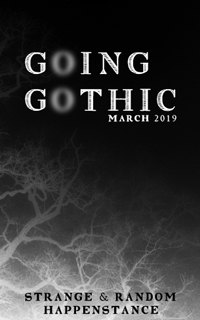
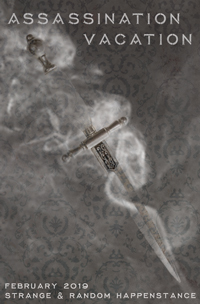
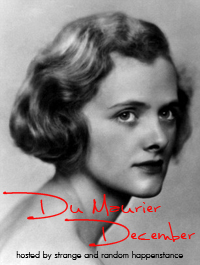











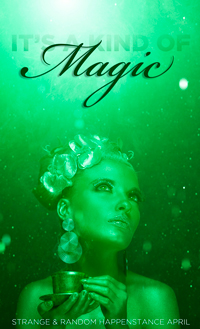
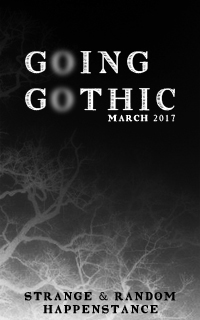

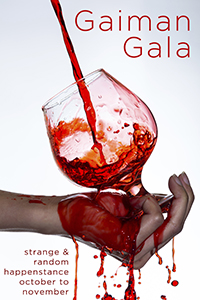
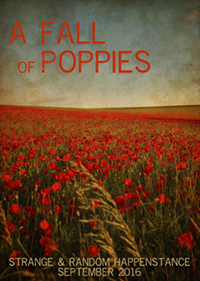



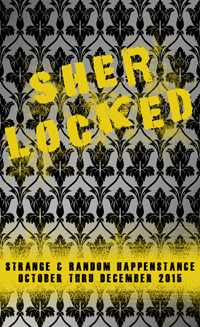







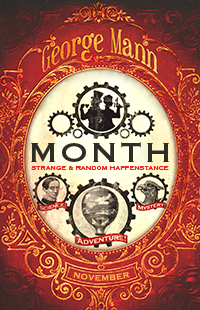






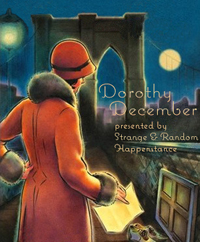





















Post a Comment